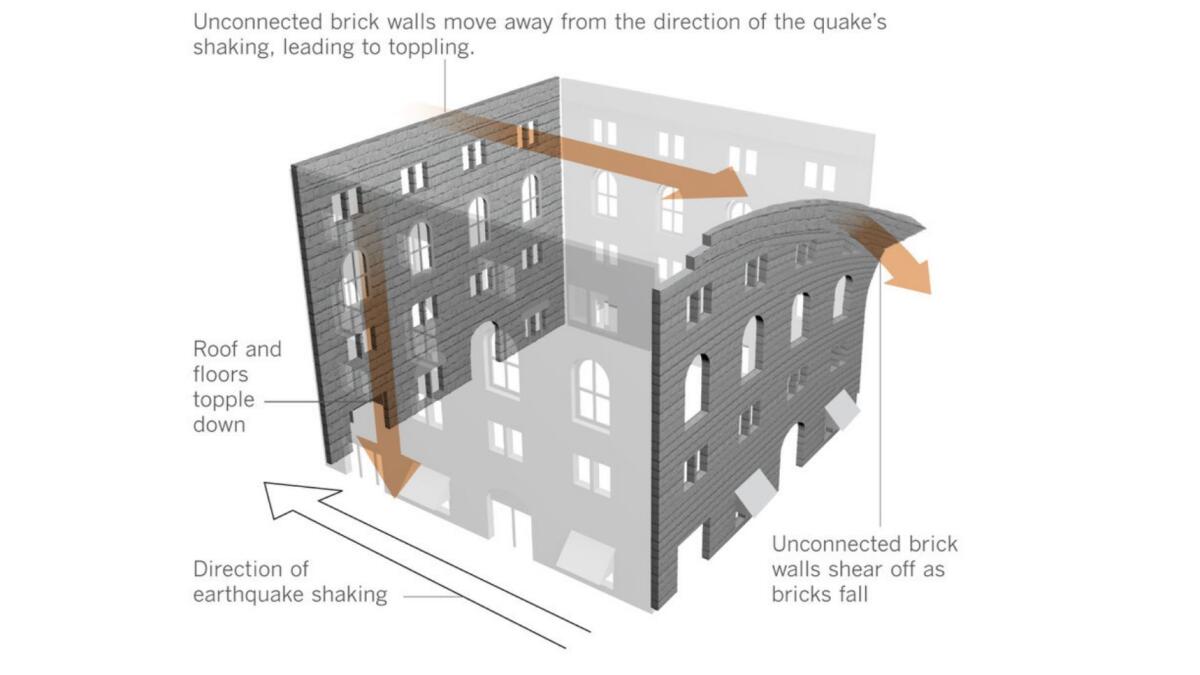Swarm of earthquakes hits Ventura
A swarm of weak earthquakes has been rattling Ventura for at least two days, including a magnitude 3.6 temblor that hit before dawn Friday.
More than 20 earthquakes of magnitude 2 or greater have been detected in Ventura, a historic city whose downtown is built around Mission San Buenaventura, dedicated in 1782.
The Ventura Fire Department said no damage was reported. While the epicenter of the magnitude 3.6 quake was in the downtown area, only light shaking — too weak to cause any damage — was reported by seismic sensors in the area, according to the U.S. Geological Survey.
The earthquake swarm began shortly after midnight Thursday. Seismologist Lucy Jones said on Twitter that earthquake swarms have occurred in Ventura before, in 1984 and 2015. Neither were followed up by a devastating earthquake.
The recent earthquake swarm is probably on an unmapped fault oriented in northwest-southeast direction, Jones said.
The existence of a swarm of weak earthquakes does not dramatically increase the risk of a future damaging earthquake in the Ventura area in the next few hours or days, according to Jones. Magnitude 3 earthquakes in California are quite common; the fact that there have been at least five of them since Thursday morning, statistically speaking, does not dramatically raise the risk of a future damaging quake in this area soon.
“There isn’t something special about being a swarm,” Jones said. “Today’s earthquake does not make the risk you’re facing a lot more worse than you already have.”
Irrespective of this swarm, Ventura already has one of the higher risks of seeing damaging shaking in any particular lifetime among cities in Southern California. Generally speaking, Ventura and the northern San Fernando Valley are expected to see very strong shaking three to four times every century — a type of shaking that can damage older homes and was felt broadly in the Valley and northern Los Angeles Basin in the magnitude 6.7 Northridge earthquake in 1994, Jones said.
By contrast, the Los Angeles Basin is expected to see very strong shaking perhaps two to three times per century, Jones said, while Orange County might see the same intensity of shaking once or twice per century. “Very strong” shaking is defined as level 7 on the Modified Mercalli Intensity Scale, and can cause considerable damage in poorly built structures, cause old brick chimneys to topple and unbraced brick walls at the top of old buildings to crash onto sidewalks and awnings.
Other major earthquakes near the Ventura County area in the last 100 years include the magnitude 6.8 Santa Barbara earthquake of 1925, which destroyed the business district of Santa Barbara and killed 13; the death toll would have been far greater had the quake hit during business hours.
In 1978, a magnitude 5.1 earthquake hit south of Santa Barbara, causing at least 65 injuries and more than $7 million in damage.
Parts of Ventura County were hit hard in the 1994 Northridge earthquake, including Fillmore, which saw homes damaged.
Ventura would be particularly vulnerable in a major earthquake. The city has long had a much weaker law than Los Angeles in addressing old brick buildings that can collapse when shaken; Ventura has only mandated that brick buildings be retrofitted above the roof line, a minimal requirement that puts the rest of the structure at risk of collapse.

City officials have said they’d like to establish a more comprehensive inventory of seismically vulnerable buildings and consider options that could require retrofit of brick and other buildings at risk of collapse. But progress stalled after the devastating 2017 Thomas fire, one of California’s most destructive in the modern record.
The Ventura fault runs right through the city’s downtown, just a block north of Main Street, in an east-west direction.
Research in recent years shows that the Ventura fault is extremely dangerous, capable of joining with other faults to produce an earthquake as large as magnitude 8 as well as severe tsunamis. Such a big earthquake on the fault is estimated to occur every 400 to 2,400 years, and could create a tsunami that would affect the coastline of Santa Barbara, Carpinteria and down through the Santa Monica area and points south.
A worst-case scenario — not particularly likely in our lifetime, but plausible — would mean a magnitude 7.7 to 8.1 earthquake ripping from Ventura underneath the San Fernando Valley, Altadena, Azusa and east through to Rancho Cucamonga in San Bernardino County.
Magnitude 3 earthquakes are quite common in California. An average of 234 earthquakes with magnitudes between 3.0 and 4.0 occur per year in California and Nevada, according to a recent three-year data sample.
Did you feel this earthquake? Consider reporting what you felt to the USGS.
Even if you didn’t feel this small earthquake, you never know when the Big One is going to strike. Ready yourself by following our five-step earthquake preparedness guide and building your own emergency kit.
The first version of this story was automatically generated by Quakebot, a computer application that monitors the latest earthquakes detected by the USGS. A Times editor reviewed the post before it was published. It was later updated by a Times reporter. If you’re interested in learning more about the system, visit our list of frequently asked questions.
More to Read
Sign up for Essential California
The most important California stories and recommendations in your inbox every morning.
You may occasionally receive promotional content from the Los Angeles Times.











